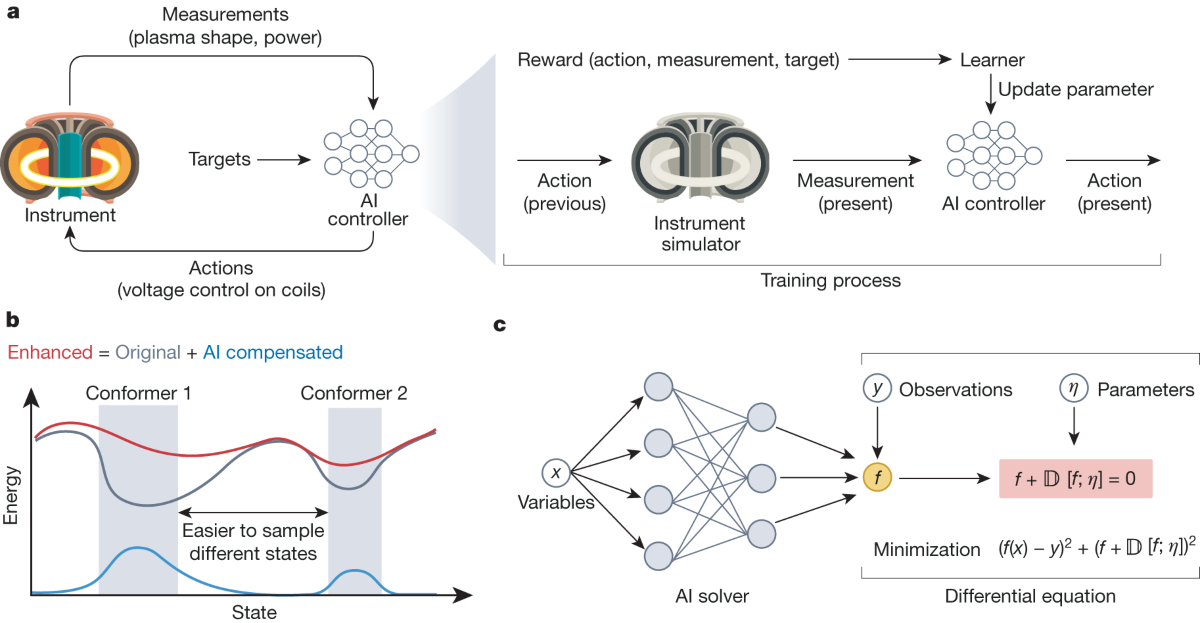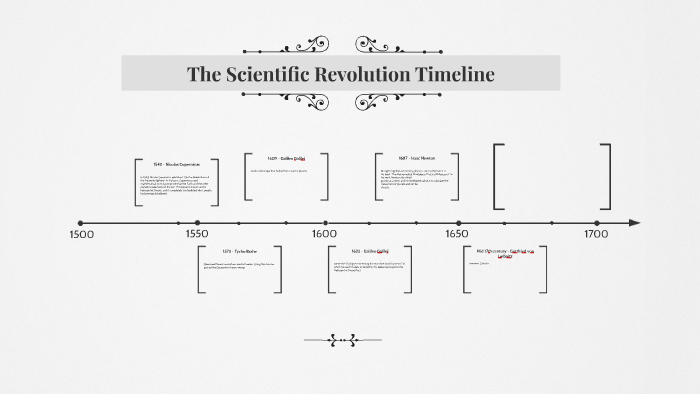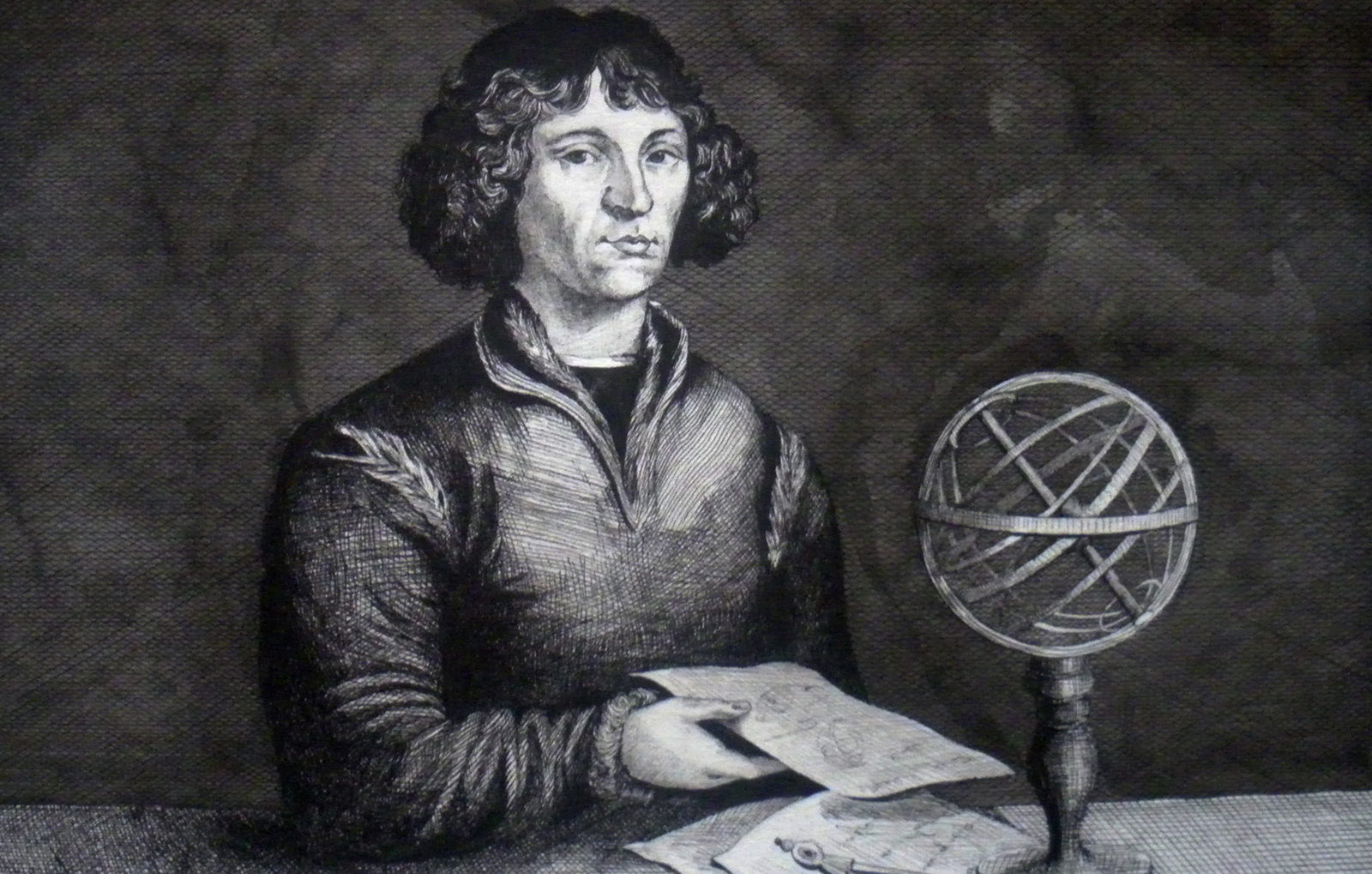The scientific discoveries of the sixteenth and seventeenth hundreds of years was an extremely important occasion throughout the entire existence of Western Progress.
Current science and the logical strategy were conceived; the pace of logical disclosure detonated; monsters like Copernicus, Vesalius, Kepler, Galileo, Harvey, Newton, and innumerable lesser figures opened world-changing privileged insights of the universe.
It has frequently been seen that such an upset happened just a single time in mankind's set of experiences, and in one specific culture: the overwhelmingly Christian culture of early-present day Europe.

This perception leads to a few inquiries: Which job, if any, did Christianity play in the introduction of current science? Did confidence bring about science? Did an honest combination and reason lead to it?
Was Christianity some way or another mindful maybe even important for the ascent of current science, as certain history specialists have contended? So, what, regardless, does religion have to do with the scientific discoveries?
However long science has existed, religionists have been endeavoring to accommodate religion and science. As of late, another type of researchers has declared that religion itself specifically Christianity really caused the introduction of science. What are current realities of the matter?
Toward addressing that inquiry, let us first audit a few prior and important verifiable turns of events; then we will go to pertinent features of the Logical Upset itself.
Scientific Discovery in the Age of Artificial Intelligence
Artificial intelligence (AI) is overall progressively incorporated into logical disclosure to increase and speed up research, assisting researchers with creating theories, plan tests, gather and decipher huge datasets, and gain bits of knowledge that probably won't have been imaginable utilizing customary logical strategies alone.
Here we look at forward leaps throughout the last ten years that incorporate self-managed realizing, which permits models to be prepared on tremendous measures of unlabelled information, and mathematical profound realizing, which use information about the design of logical information to improve model precision and effectiveness.
Generative artificial intelligence strategies can make plans, for example, little particle medications and proteins, by dissecting different information modalities, including pictures and successions. We examine how these techniques can assist researchers all through the logical cycle and the focal issues that with staying in spite of such advances.
The two engineers and clients of man-made intelligence toolsneed a superior comprehension of when such methodologies need improvement, and difficulties presented by unfortunate information quality and stewardship remain. These issues cut across logical teaches and require creating central algorithmic methodologies that can add to logical comprehension or secure it independently, making them basic areas of concentration for simulated intelligence advancement.
Science Before the Scientific Revolution
Science was brought into the world in antiquated Greece among the pre-Socratics, who were quick to search for normal clarifications of their general surroundings. Thales' case that everything is made of water is critical in light of the fact that it expects that the basic structure block of the world is a characteristic substance.
Embracing this naturalistic standpoint, the Greeks of the traditional and Greek times made significant advances in space science, calculation, medication, and science and laid out the fields of history, show, political hypothesis, and reasoning.
Theory was particularly significant. Plato and Aristotle the philosophical goliaths of Greece made two emphatically unique philosophical frameworks, particularly regarding their power and epistemologies.1 Plato, in special case for the overall Greek demeanor, recommended that the world we experience isn't completely genuine.

He kept up with that the individual actual items we see are flawed, ruined impressions of those in a higher reality. Plato called this higher aspect the universe of the Structures and held that information on this domain can be reached just through instinct.
In spite of the fact that Plato loved science, he did as such for its supposed capacity to prepare the brain to get the Structures as opposed to for the purpose of acquiring comprehension of the actual world. Plato cared barely at all about concentrating on this world.
Aristotle, conversely, was intrigued exclusively in this world. He held that the objects of the actual world are completely genuine and in this manner deserving of study.
Information, he held, is acquired not from baseless allowances or instinct, but rather eventually from acceptance from the investigation of the substantial, specific things we see, contact, smell, and hear around us.
As per Aristotle, this world is genuine, and worth reading up for the information it brings: from information on the lovely stars in the night sky to that of the minutest subtleties of foul ocean animals.
Aristotle was not just the maker of a way of thinking strong of science; he was a researcher himself, and his great work in science (a science he established) shows a psyche completely in contact with and enthused about figuring out the actual world.
Tragically the Greek researchers (even Aristotle) for the most part were not worried about the functional uses of their investigations and speculations. Thusly, the down to earth yet nonintellectual Romans who followed saw little worth in keeping the Greek logical practices alive, significantly less growing them. The Romans' logical compositions were simple rundowns of Greek works.
After the fall of Rome, science came to a standstill, alongside practically any remaining scholarly movement. The erudite people of the period known as the "time of confidence" turned their consideration completely to the next world.
Augustine, the most powerful Christian scholar, was profoundly impacted by Plato's extraordinary way of thinking. He viewed science as a "delight of the eye" and, best case scenario, as a "handmaiden" to religion.2 For him, confidence in Christian regulation outweighed the finishes of reason.
While Europe was entering its Dim Ages, the logical accomplishments of ancient history were being found by the Islamic world. An interpretation development started in Baghdad prompted each of the Greek logical works opening up in Arabic.
Islamic scholars dominated crafted by Aristotle, Ptolemy, Galen, and others. Then, starting in the twelfth hundred years, Europeans began finding the noteworthy information on the Islamic world, and another interpretation development started, this time from Arabic to Latin. These interpretations made accessible in Latin many works by Aristotle and other old journalists, alongside broad discourses by Arabic creators.
To the middle age Europeans who had been encircled by obliviousness and supernatural quality, Aristotle's advantage in and information on the actual world was amazing and overpowering.
Be that as it may, the Congregation was undecided to the investigation of Aristotle until Thomas Aquinas carried his thoughts into the standard of Christian idea. Aquinas endeavored to orchestrate Christian religious philosophy and Aristotelian regular way of thinking, and indicated what he saw as the appropriate spaces of confidence and reason.
In particular, Aquinas acknowledged Aristotle's perspectives on reason and the actual world: "Reason, Aquinas educated, isn't an honest handmaiden, yet an independent staff, what men should utilize and comply; the actual world is definitely not a pitiful radiation, yet strong, comprehensible, genuine; life isn't to be reviled, however to be lived."3
The Thomist blend of Christianity and Aristotelianism turned into a predominant power in the Congregation, and remained so for a really long time. Given the beforehand prevailing "handmaiden" perspective on science, this added up to the freedom of reason and a passkey for men to explore this world.
This additionally prompted Aristotle's works turning into the groundwork of the main colleges. These colleges began in urban communities like Bologna, Paris, and Oxford during the twelfth hundred years.
They gave essential schooling in exemplary Greek and Roman messages training that would become boundless all through Europe. Toward the finish of the thirteenth 100 years, Aristotle's compositions on power, cosmology, material science, meteorology, and normal history were required perusing for all college understudies.
The freedom of reason by Aquinas prompted the Renaissance. Following quite a while of fixation on the following scene, the Renaissance was a resurrection of interest in this world, the universe of nature and of no nonsense people.
This should be visible strikingly in the specialty of the period: The Renaissance craftsmen figured out how to take a gander at the actual world around them, and the figures in their compositions showed some major signs of life in each of the three aspects.
One outgrowth of Renaissance believed was the "normal sorcery" custom, in what men searched for associations in nature that are not perceptually self-evident or apparent, which they named "mysterious" (signifying "stowed away"). Instances of such associations incorporated the fascination of iron to a magnet, the capacity of the sunflower to follow the sun across the sky, the moon's impact on the tides, and the impacts of prescriptions.
These associations were much of the time considered "feelings" or "abhorrences," as a result humanizing normal peculiarities. To find these associations, men searched for exceptional "signs" that God had put on things.
For instance, the way that a pecan seems as though a cerebrum was viewed as proof that it would recuperate diseases of the mind. Men accepted that getting a handle on these secret associations could be of incredible commonsense worth, yet they didn't yet have a substantial technique for finding or grasping them.
A few different elements added to the way of life where the Logical Insurgency would happen. Gutenberg's advancement of the print machine during the 1450s made conceivable the reasonable multiplication of books, making it immeasurably simpler to spread new information.
The sixteenth century Transformation fragmented the Congregation into various fighting camps, finishing the Congregation's solid predominance over the European scholarly scene.
In the fifteenth and sixteenth hundreds of years a progression of journeys of disclosure, pointed toward finding new shipping lanes, yielded a blast of data about outlandish spots, new plants, creatures, minerals, medications, people groups, dialects, and thoughts. These variables added to a culture where man's psyche was open to better approaches for checking the world out. The stage was set for the Logical Unrest.
The Scientific Revolution: Key Developments
The year 1543 saw the distribution of two stupendously significant logical works, and consequently is in many cases thought about the start of the Logical Upset. The first was Andreas Vesalius' On the Design of the Human Body, which, with its amazing outlines of the human body, established the cutting edge investigation of life structures.
Vesalius, a prepared doctor, was profoundly impacted by the naturalism of the Renaissance by the possibility that the regular world merits our cautious review.
This drove him to perform careful analyzations of human bodies and to recruit a refined Renaissance craftsman to make the spectacularly point by point woodcut delineations for his book. Crafted by Vesalius propelled numerous devotees who later made significant physical and physiological revelations.

However, considerably more critical than Vesalius' book was Nicolas Copernicus' On the Transformations of the Magnificent Circles, distributed that very year, which introduced his full depiction of the heavenly movements focused on the sun, as opposed to the earth.
For fifteen hundred years, all informed Europeans had acknowledged the Ptolemaic arrangement of the universe, in which the earth is fixed unmoving at the middle, and all the other things rotates around the earth, in mixes of round movement, inside strong translucent circles.
That the earth was fixed at the focal point of the universe was affirmed by both the Holy book and by good judgment. On the off chance that the earth was turning or going through space, objects hurled straight out of sight wouldn't descend in a similar spot.
Yet, Copernicus held that his framework was more numerically exquisite than Ptolemy's as well as that it comprised a genuine depiction of the universe.
The heliocentric arrangement of Copernicus shaped the primary connection in a chain of cosmic perceptions, thinking, and disclosures that incorporated those of such extraordinary researchers as Tycho Brahe, Johannes Kepler, and Galileo Galilei, and finished in a stupendous combination with respect to Isaac Newton, with his general law of attraction.
This chain of revelations could never have been conceivable without Galileo's splendid trial examinations concerning the idea of drop utilizing pendulums and slanted planes. Galileo was the best of the early experimentalists of the Logical Upset, yet he was not alone.
Galileo's counterparts William Gilbert and Francis Bacon additionally centered around the possibility of orderly trial and error as the way to figuring out normal peculiarities. As the seventeenth century advanced, faith in the force of trial and error became far reaching, and researchers created new accuracy apparatuses for performing perceptions and analyses. These instruments incorporated the telescope, magnifying lens, indicator, thermometer, accuracy clock, and vacuum siphon.
Galileo was the first of numerous splendid experimentalists who tracked down cunning approaches to researching the properties of nature. One more of these men, Robert Boyle, utilized the indicator and vacuum siphon to find the specific connection between the volume of gas and the tension applied on it (referred to the present time as Boyle's regulation).
He additionally exposed catalytic plans to orderly trial and error and normal investigation, and is in this manner thought about one of the progenitors of the study of science.
These new researchers were anxious to impart their plans to similar others, and before long imagined a totally new kind of friendly association: the logical society. Logical social orders in Italy, France, Britain, and somewhere else made it a lot simpler for researchers to meet and examine their work, to perform tests, and to provide details regarding logical work being finished in different nations.
The earliest logical society, to which Galileo had a place, was the Accademia dei Lincei (Foundation of the Lynx) in Rome, which was prevailed by the more formal Accademia del Cimento (Institute of Trial). By the 1660s, definitely supported social orders had been established in France (Academie Royale des Sciences) and Britain (The Regal Society of London), and both had official diaries for the distribution of exploration done by their individuals.
The sciences generally crucial to the Logical Unrest were cosmology and physical science, however researchers likewise made huge revelations in regards to the idea of living things for instance, that blood courses through the body, that generation starts with the association of egg and sperm, that sexual proliferation happens in plants, and that life capabilities could be seen as analogs of physical and substance processes.
The main disclosure of the Logical Unrest was the strong new technique for revelation itself. The cutting edge logical technique depended on a mix of cautious perception, controlled tests, and the quest for numerical regulations and their connections. Student of history of science I. B. Cohen calls attention to
This new technique was at last an augmentation of Aristotle's essential philosophical direction: his mysticism of this world and his epistemology of reason.
Tragically, Aristotle's particular speculations about material science and cosmology, for example, his clarification of why weighty items fall, ended up being mistaken. Furthermore, various Educational thinkers demanded the reality of these Aristotelian hypotheses even notwithstanding new observational proof against them.
Thus, numerous seventeenth century researchers framed an exceptionally bad judgment of Aristotle, even as they acknowledged his fundamental philosophical direction. As researchers, for example.
Galileo and William Harvey called attention to, Aristotle had contended that all science should be attached to cautious perception of the world. Thoughtfully, Aristotle's this-common power and epistemology were the underpinning of the Logical Transformation. What's more, it was attributable to Thomas Aquinas that Aristotle's thoughts were back on the scene.
Science and Religion during the Scientific Revolution: God’s Two Books
During the Logical Unrest there was minimal express struggle among science and religion, aside from Galileo's well known conflict with the Roman Investigation. Researchers by and large embraced (or possibly didn't straightforwardly dismiss) the strict perspectives on their way of life.

Notwithstanding, in a huge reorientation among science and religion, men reconceived God as assuming a lot more modest part in the universe.
One key to this reorientation was the similitude of "God's two books" the Book of Sacred text and the Book of Nature which were thought of as similarly meriting man's consideration. This analogy began in Thomas Aquinas' honest's qualification between the domains and reason, and was broadly advanced in the seventeenth 100 years by Francis Bacon:
Was Christianity Necessary for the Birth of Modern Science?
In ongoing many years, numerous scholastic history specialists of science have dismissed the possibility that science and religion are contrary, and they have composed volumes with an end goal to discredit what they call the "contention proposal" the possibility that science and religion are essentially in struggle.
These antiquarians have likewise gone about as empowering influences for stalwart religionists to contend that religion caused the introduction of science.
These religionists incorporate the productive Stanley Jaki, Benedictine minister and teacher of physical science; Ian Barbour, teacher of religion and physical science; Thomas Woods, a well known freedom supporter Catholic essayist; and Rodney Unmistakable, a humanist of religion at Baylor College.
For example, Obvious, the most noticeable contemporary defender of this view, dedicates a part of his book For the Brilliance of God to the possibility that Christianity laid the philosophical basis for the improvement of present day science, stating, Christianity portrayed God as a reasonable, responsive, trustworthy, and transcendent being and the universe as his own creation, hence having a levelheaded, legal, stable construction, anticipating human understanding.
How Does Curiosity Influence Scientific Discovery?
The researcher is interested about the things that structure our reality and the universe components, life, conditions, systems. They apply that interest by advancing however much they can about the points that flash their advantage.
The researcher generally needs to know more and the responses they find frequently lead to additional inquiries. The researcher is anxious to contribute what they know, helping others and looking to involve their insight in manners that add to our aggregate comprehension and work on our lives. The researcher comprehends the benefit of working with, and gaining from, individual researchers.

